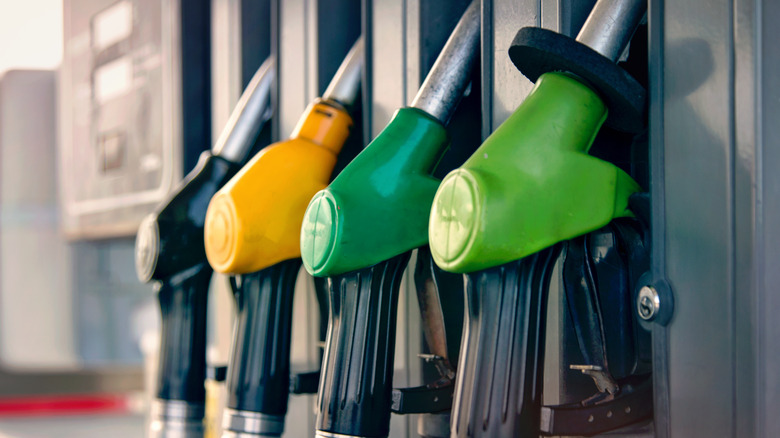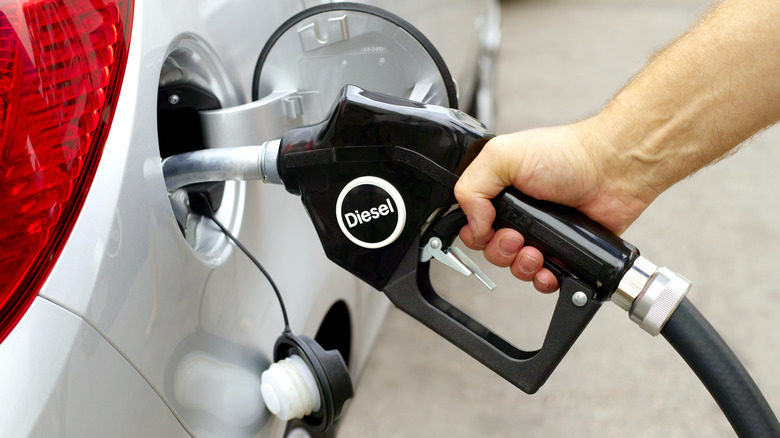Diesel Vs. Kerosene: What's The Difference Between These Two Fuels?
As the 21st century has continued on, great strides have been made in regards to how society powers daily life. Electric cars have become a staple of the road, and there are plenty more awesome ones coming that we're looking forward to, and more houses and properties have adopted windmills and solar panels. Thus, alternative renewable energy sources, including some strange ones, are being thoroughly explored, but we still have quite a long way to go before we can give fossil fuels a rest. Oil remains one of the most important resources in the world for more reasons than one.
From powering cars and trucks to helping create a range of medical products, among a host of other uses, crude oil is integral to our current way of life. Despite this, there are still some gaps in knowledge about it within the general public, specifically when it comes to the differences between the fuels made from it. Most are aware of gasoline, as it's used to power countless different commonplace appliances and vehicles, but some fogginess can arise when it comes to two of its contemporaries: diesel and kerosene.
So, what's the difference between diesel and kerosene? As it turns out, even though they're somewhat alike, the differences are vast.
What to know about diesel
Between the two fuel sources, diesel is the one you're more likely to encounter in day to day life than kerosene. It's typically used in various vehicles such as delivery trucks, boats, buses, and similar machines, as well as generators containing diesel engines – hence why it can be purchased at most gas stations. Diesel fuel can fall into one of three categories. Off-road or red diesel is for, as the name suggests, machinery and non-road ready vehicles, truck diesel is geared toward long-haul trucks, and automobile diesel is for diesel-capable cars, SUVs, and pickup trucks. Each involve different tax rates and exemptions which, if not followed, can cause legal trouble.
Moving into the science behind diesel fuel, it is extracted from crude oil after kerosene, as extraction is based on lowest to highest boiling point. Speaking of, the boiling point of diesel sits at a maximum of approximately 675 degrees Fahrenheit. Once extracted, it is used for heavier vehicles over gasoline for a few reasons. It's much thicker and burns comparatively slower, thus fueling diesel engines effectively, for longer periods, and giving them the power they need to move more weight than the average gasoline engine — even the most reliable ever built.
What to know about kerosene
While it's not necessarily rare or difficult to come across, kerosene isn't advertised in the same way as diesel is. That's because, unlike diesel, kerosene isn't a prime choice for powering a truck or similar large modes of transportation. It can technically run a diesel engine, but due to a lack of lubrication, it can do more harm than good in the long run. Rather, kerosene is better used for other appliances in need of fuel. It has historically been used to power lamps, is a fuel source for room-sized heaters, and is used in the production of jet fuel.
As noted before, kerosene is extracted from crude oil before diesel, with kerosene's maximum boiling point being around 572 degrees Fahrenheit. It can then be sorted into two varieties: Type 1-K for limited indoor use and a sulfur by weight content of .04%, and Type 2-K for flue-equipped heaters and other appliances with .30% sulfur by weight. Overall, compared to diesel, it burns much cleaner, and is less likely to gel — go from a flowing liquid form to a more solid gel one — under colder temperatures. Additionally, kerosene is clear or a pale yellow color while diesel can sometimes have a reddish shade.
With these stats in mind, hopefully it has become more clear the differences between diesel and kerosene when it comes to their uses and scientific qualities.


